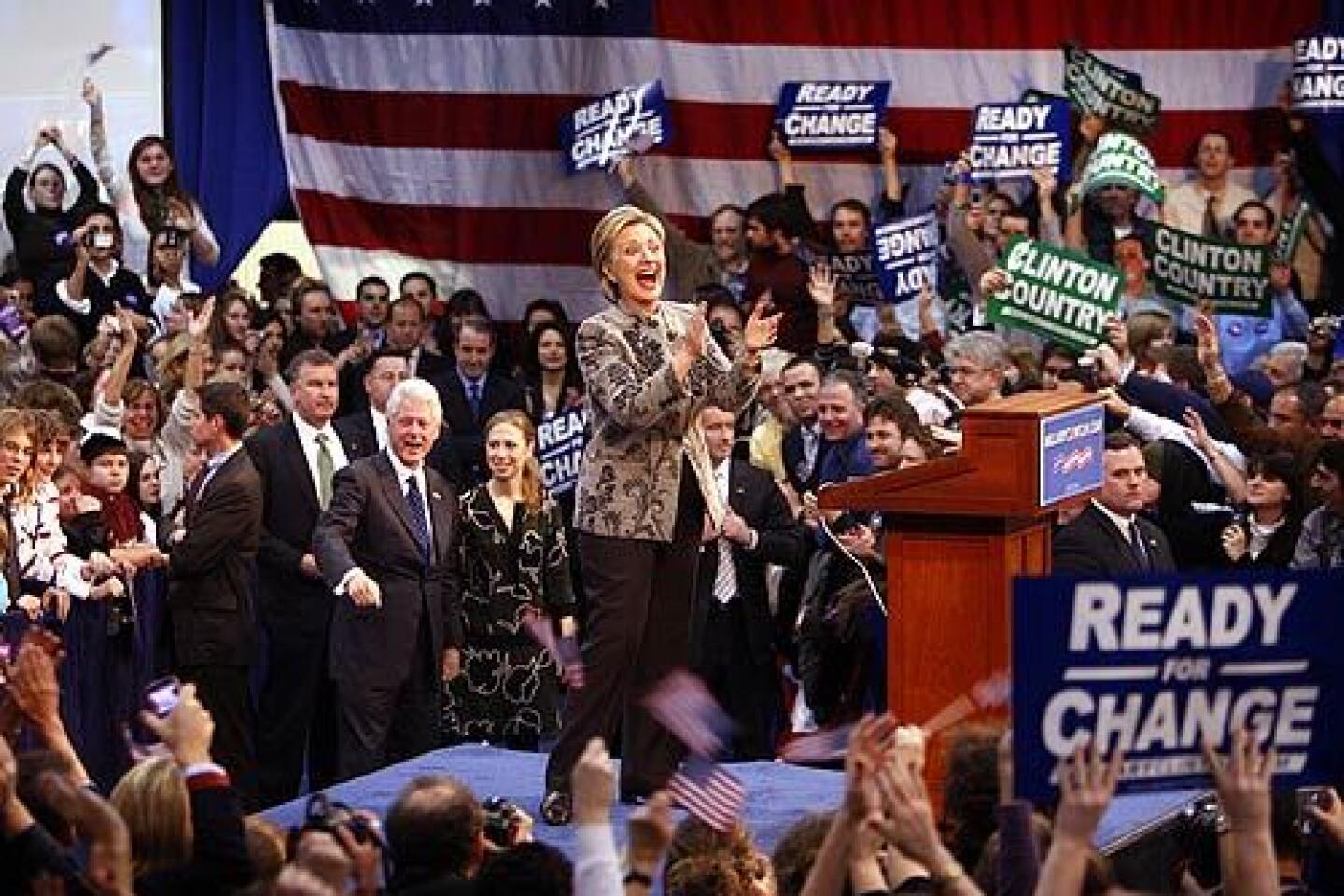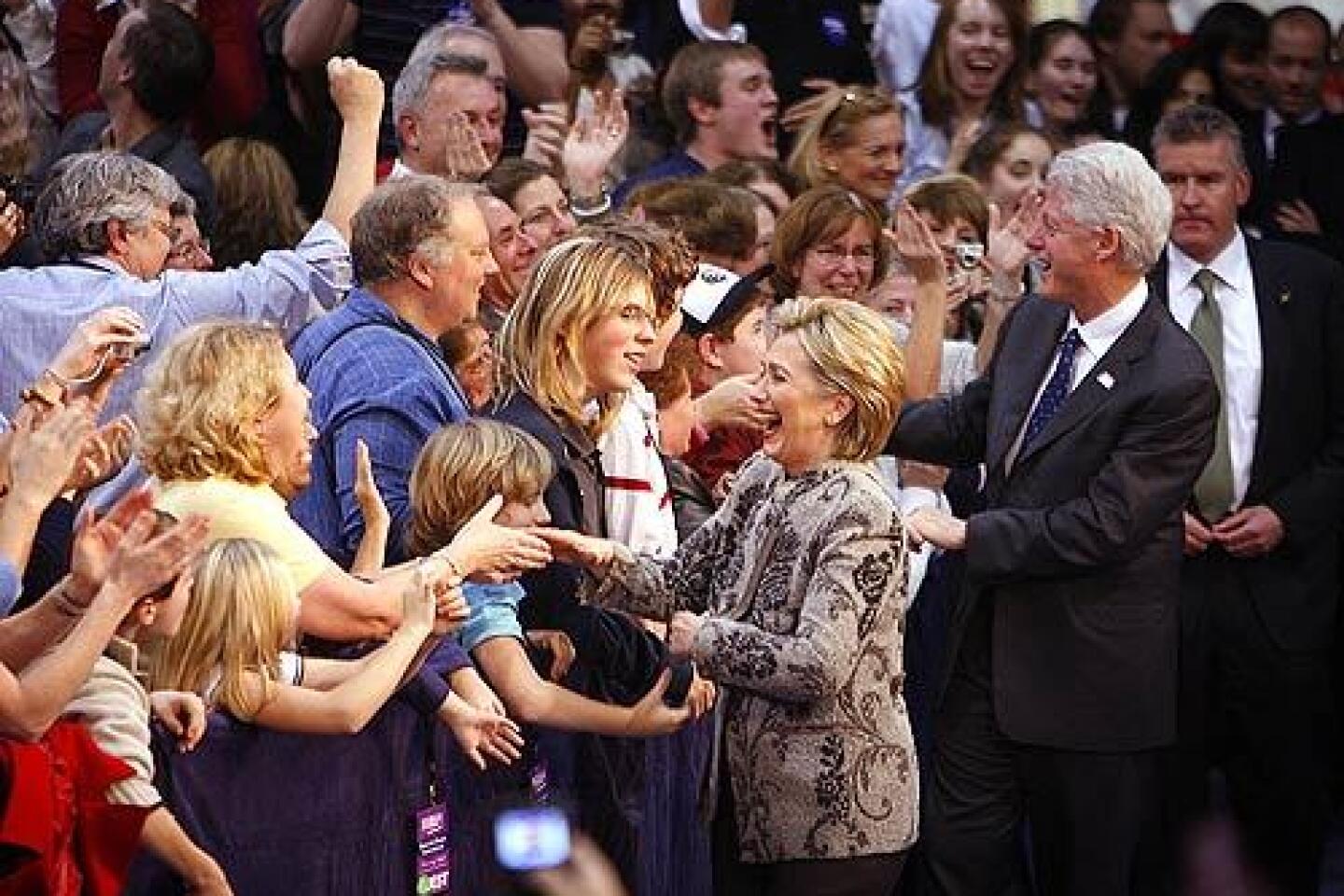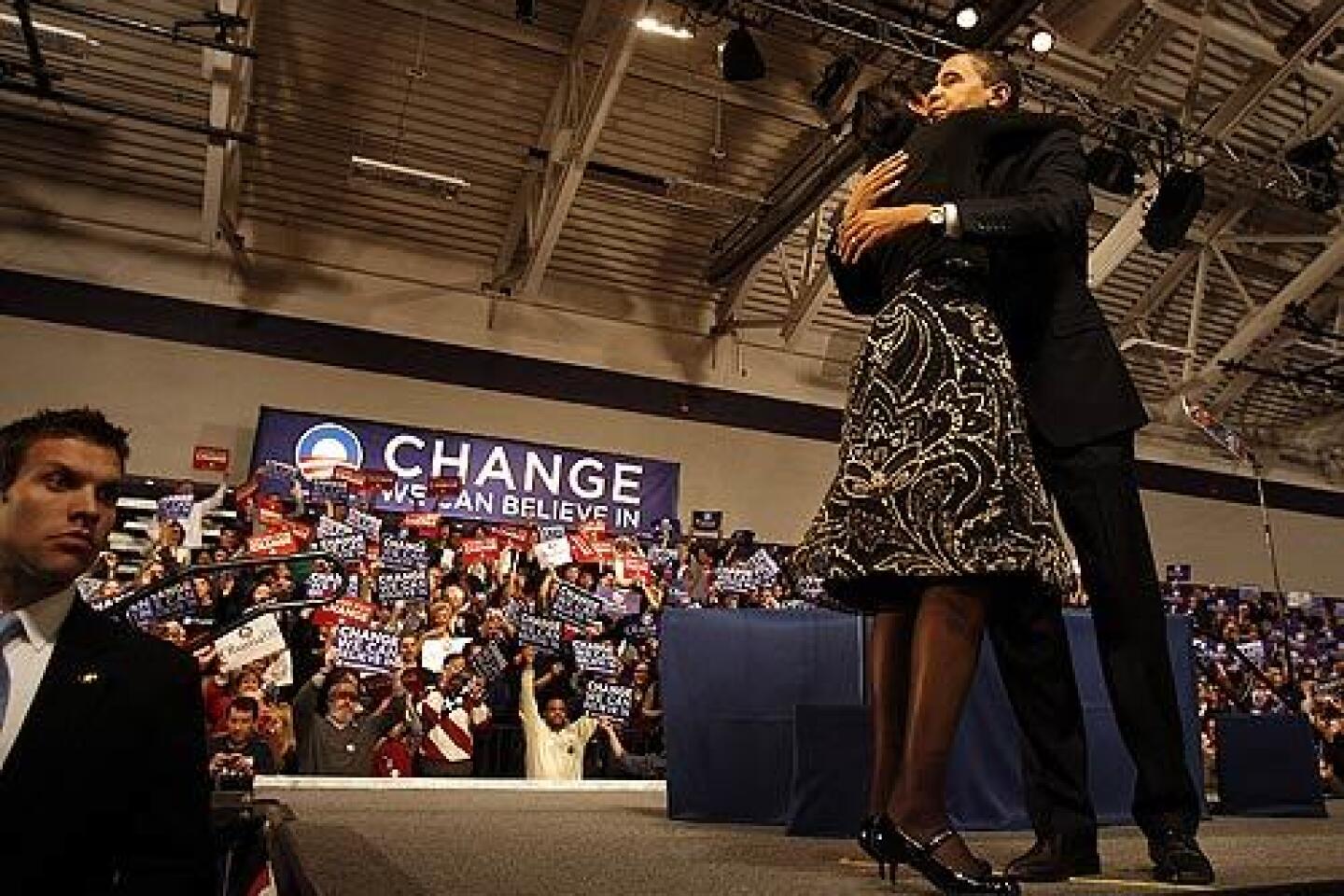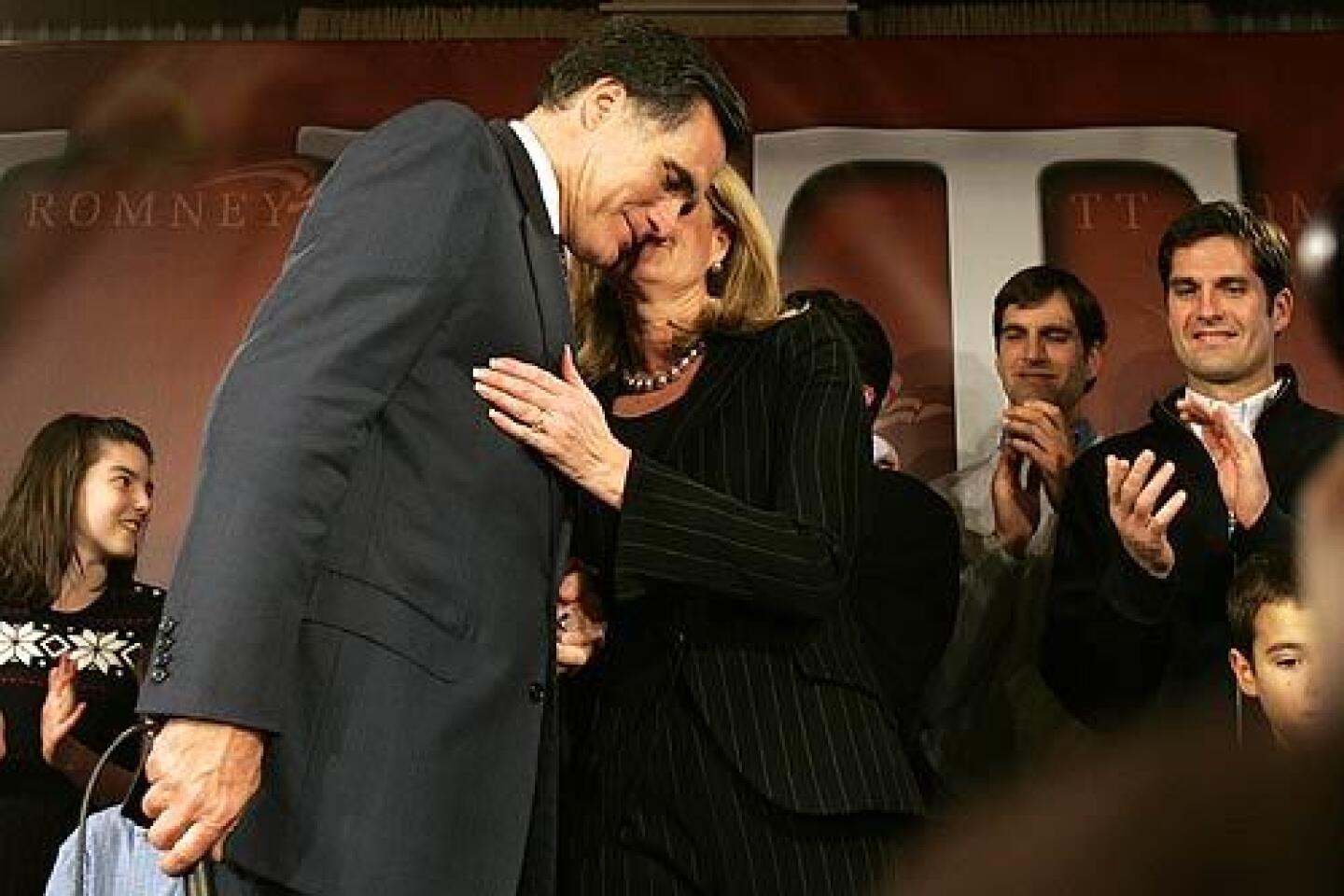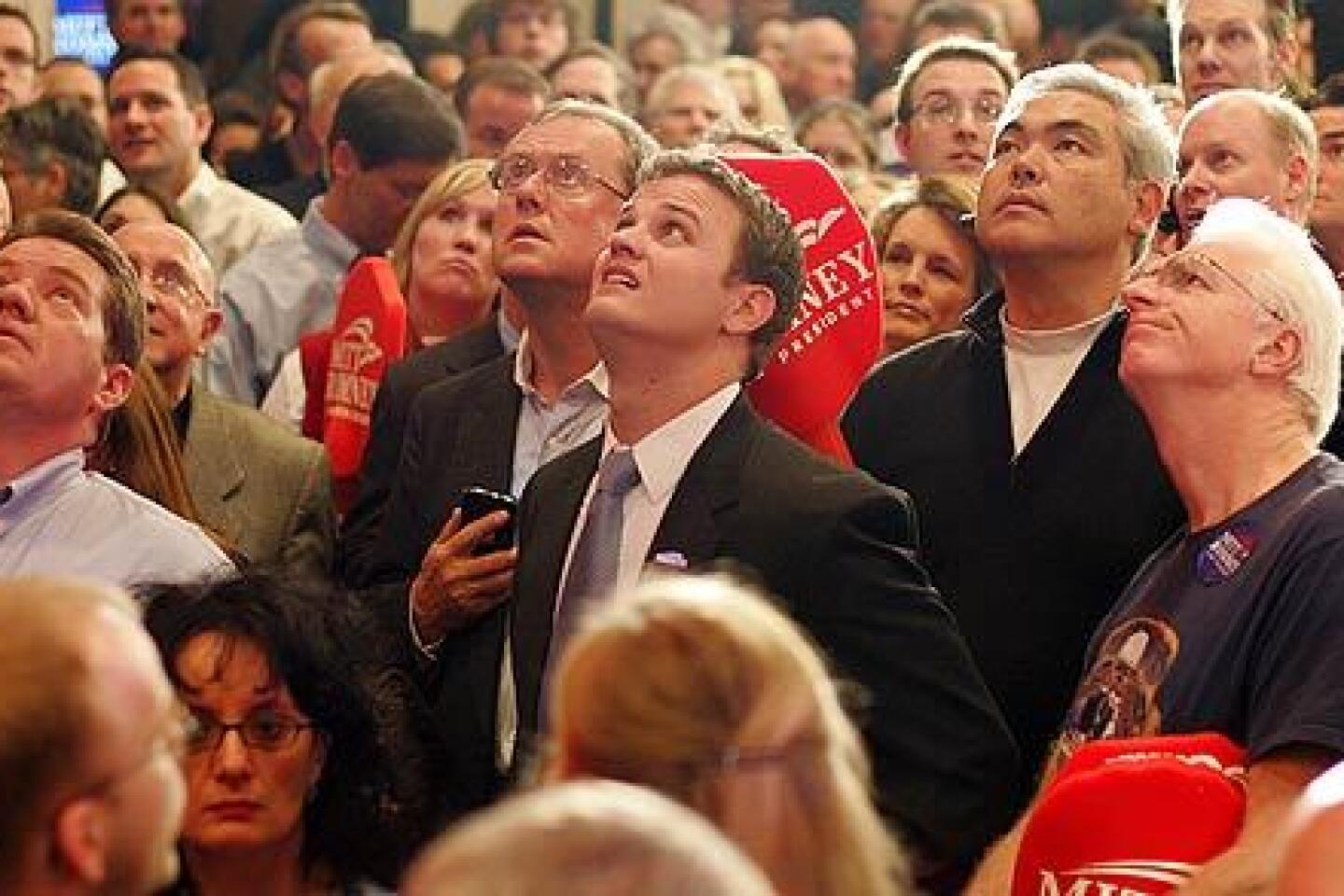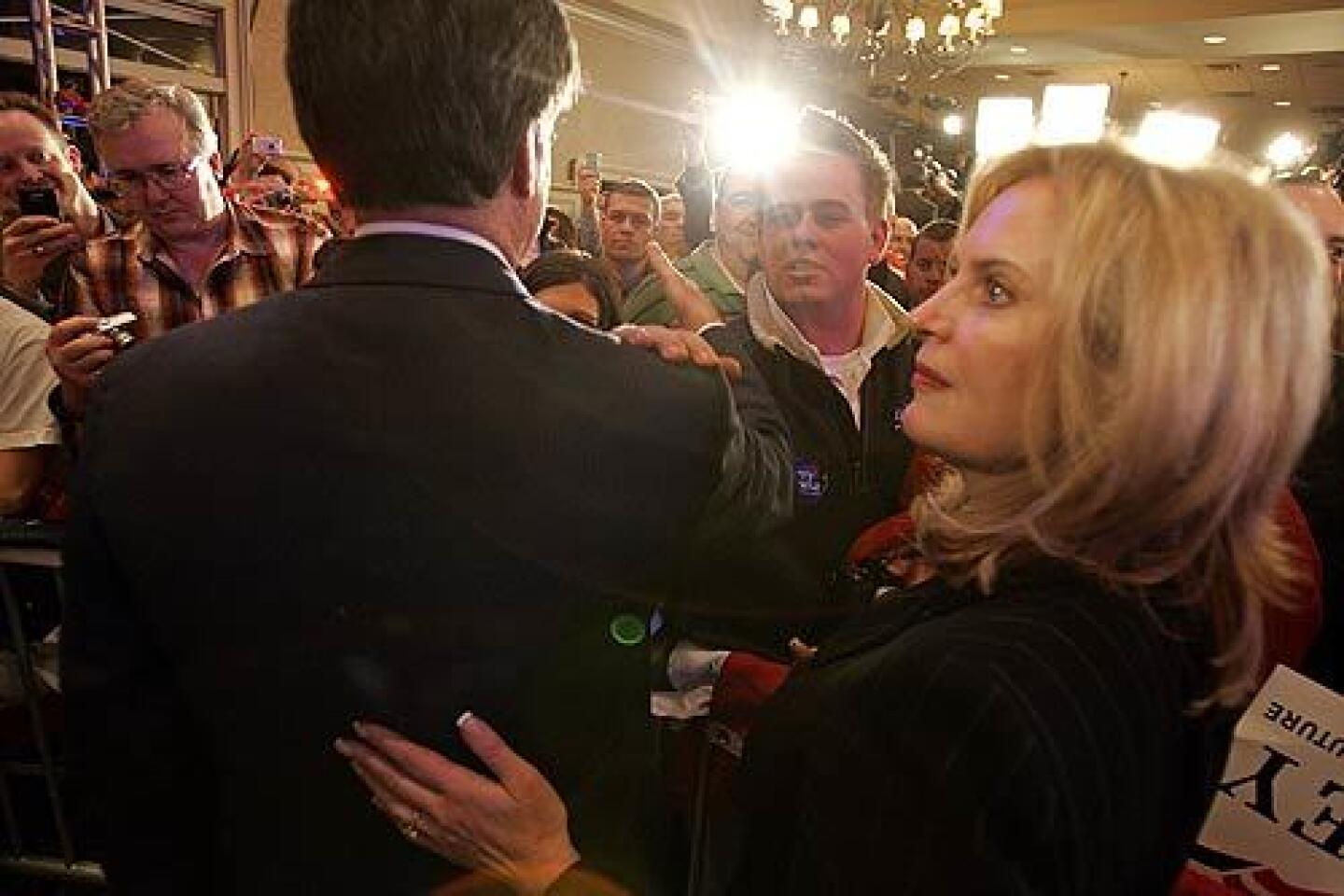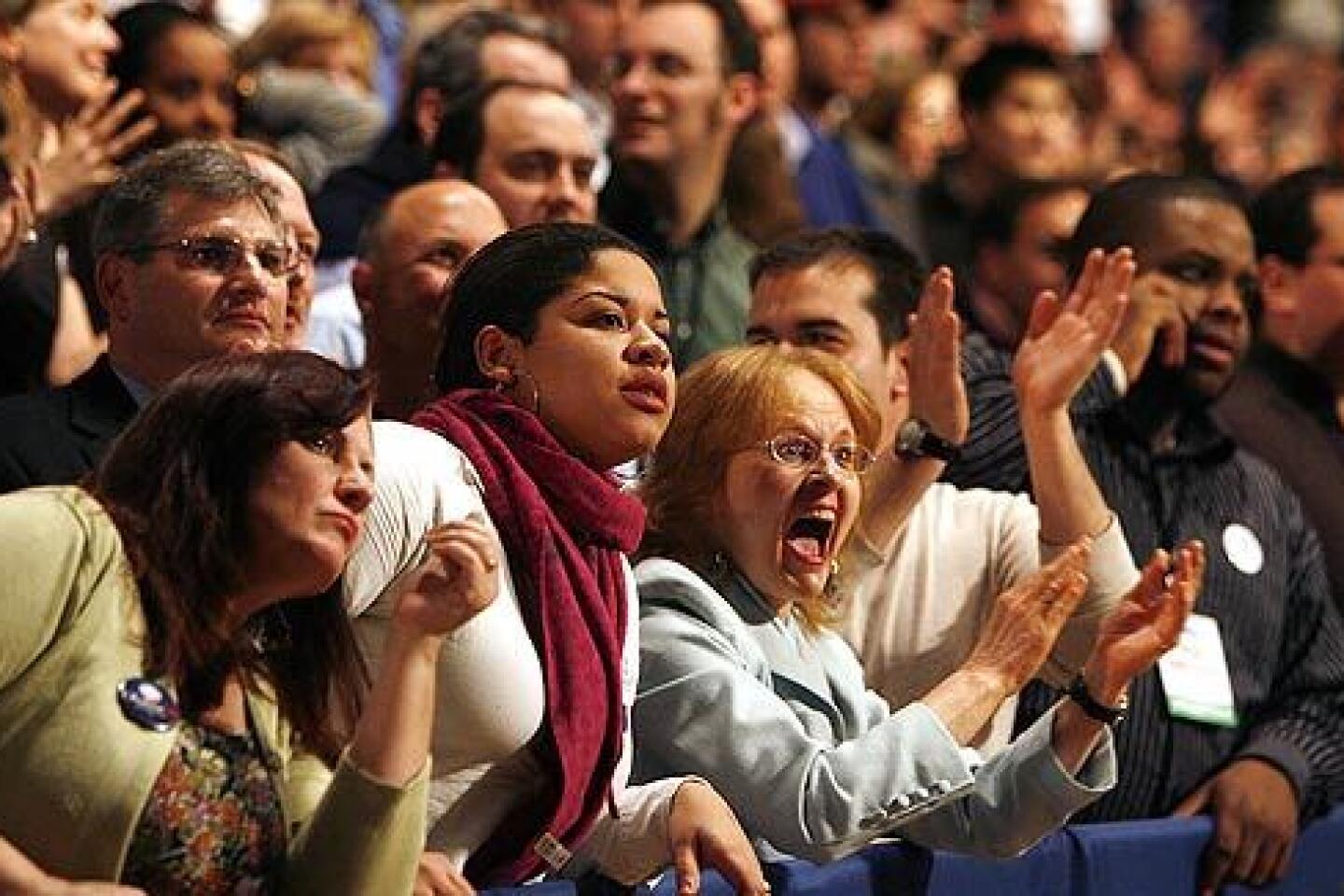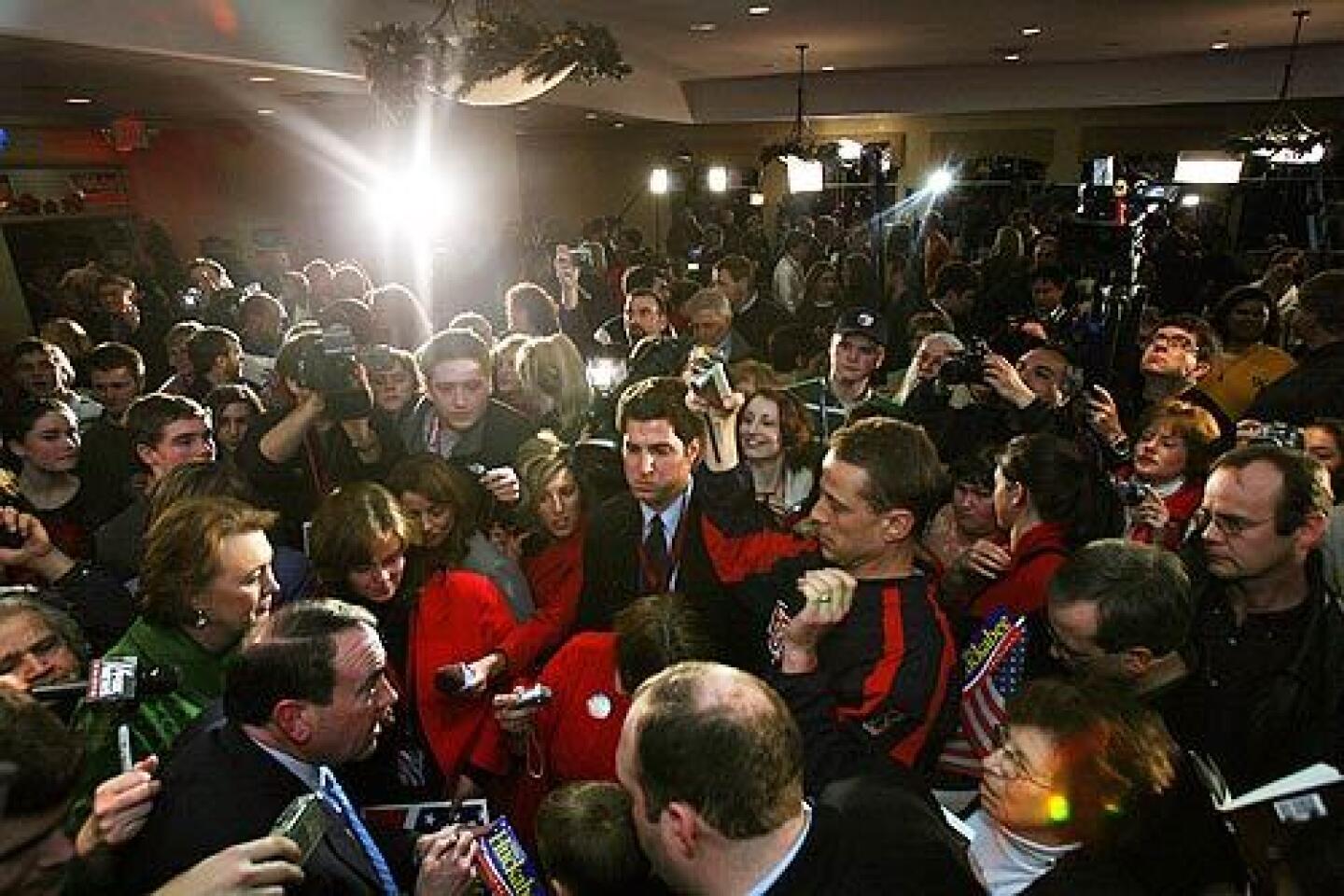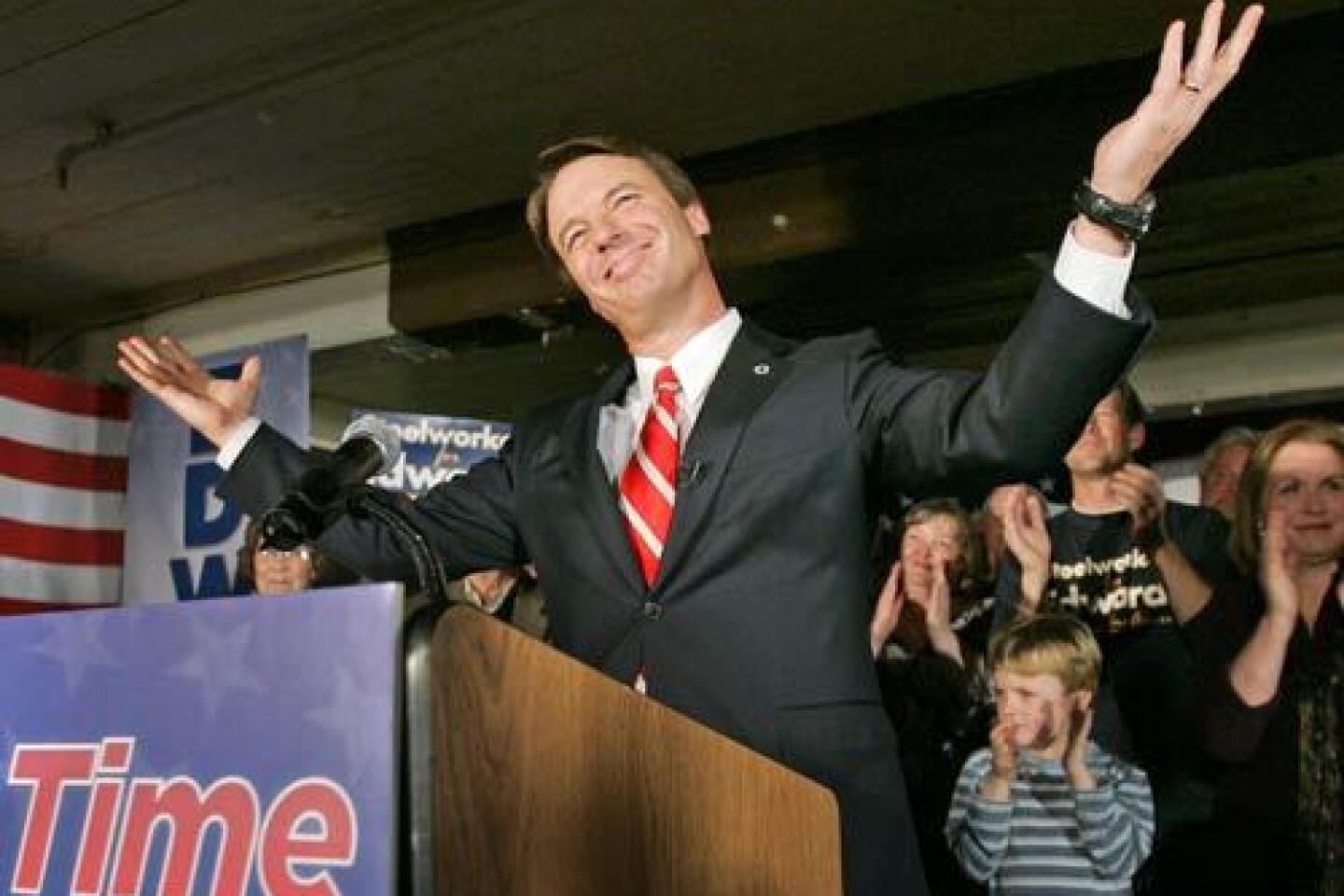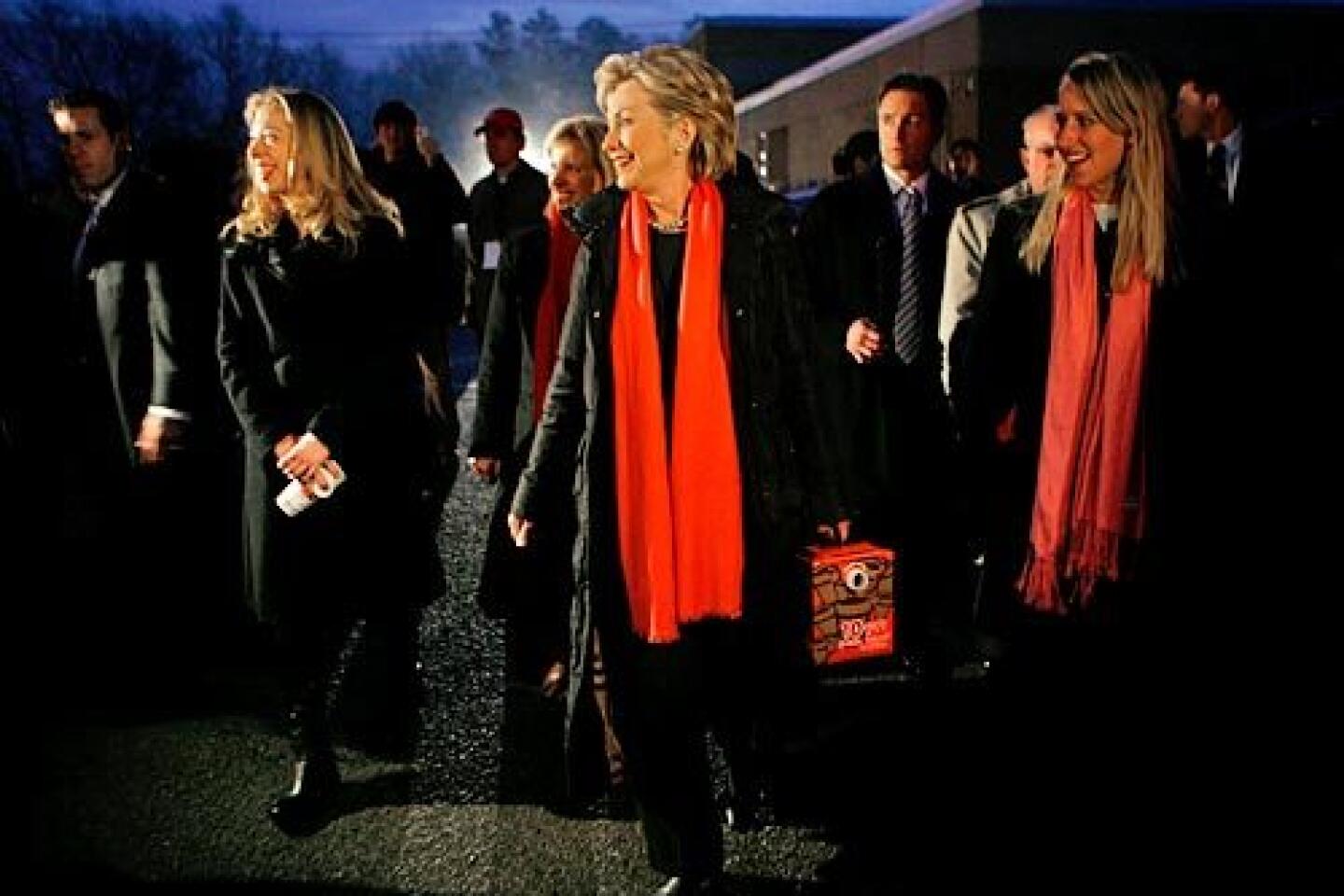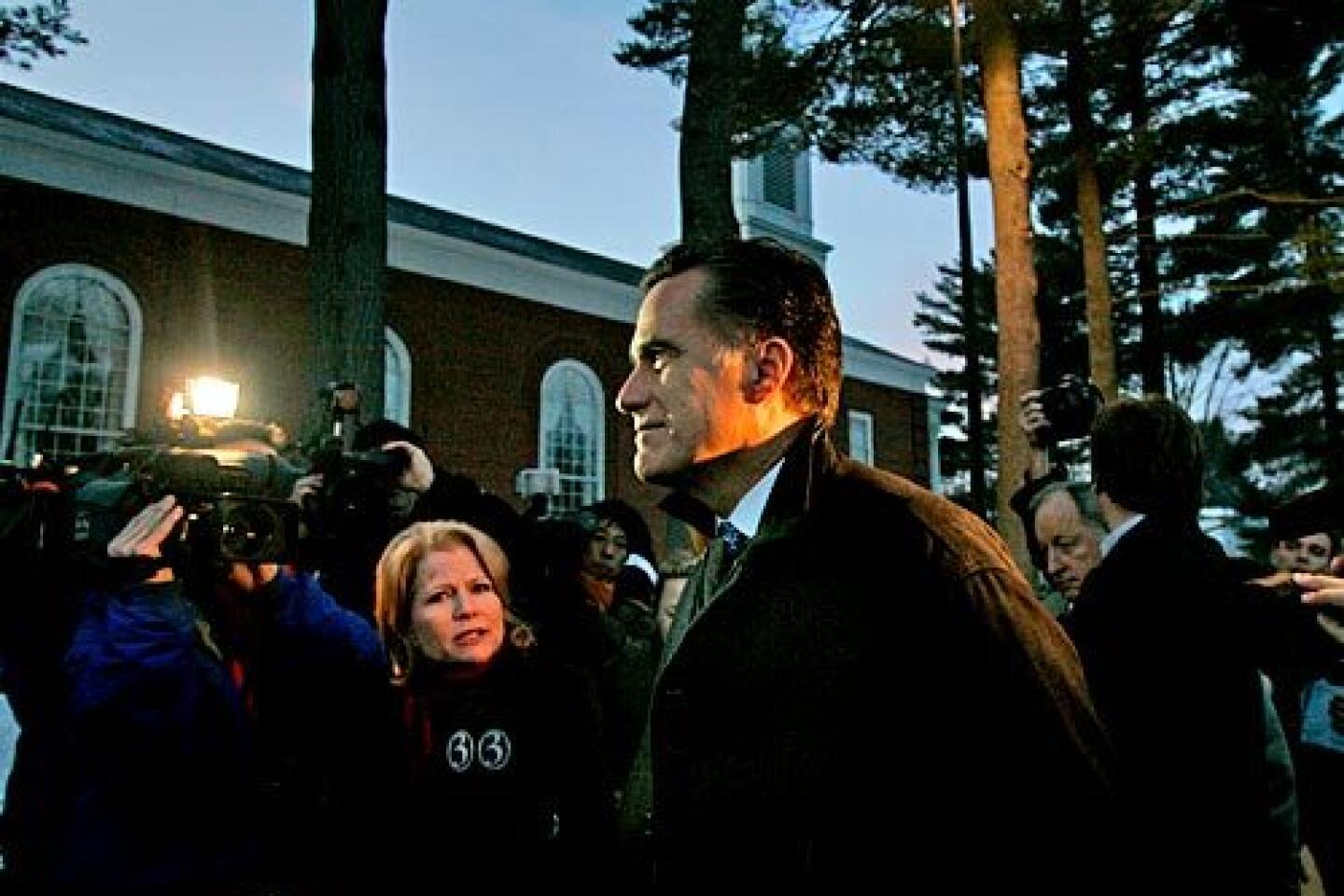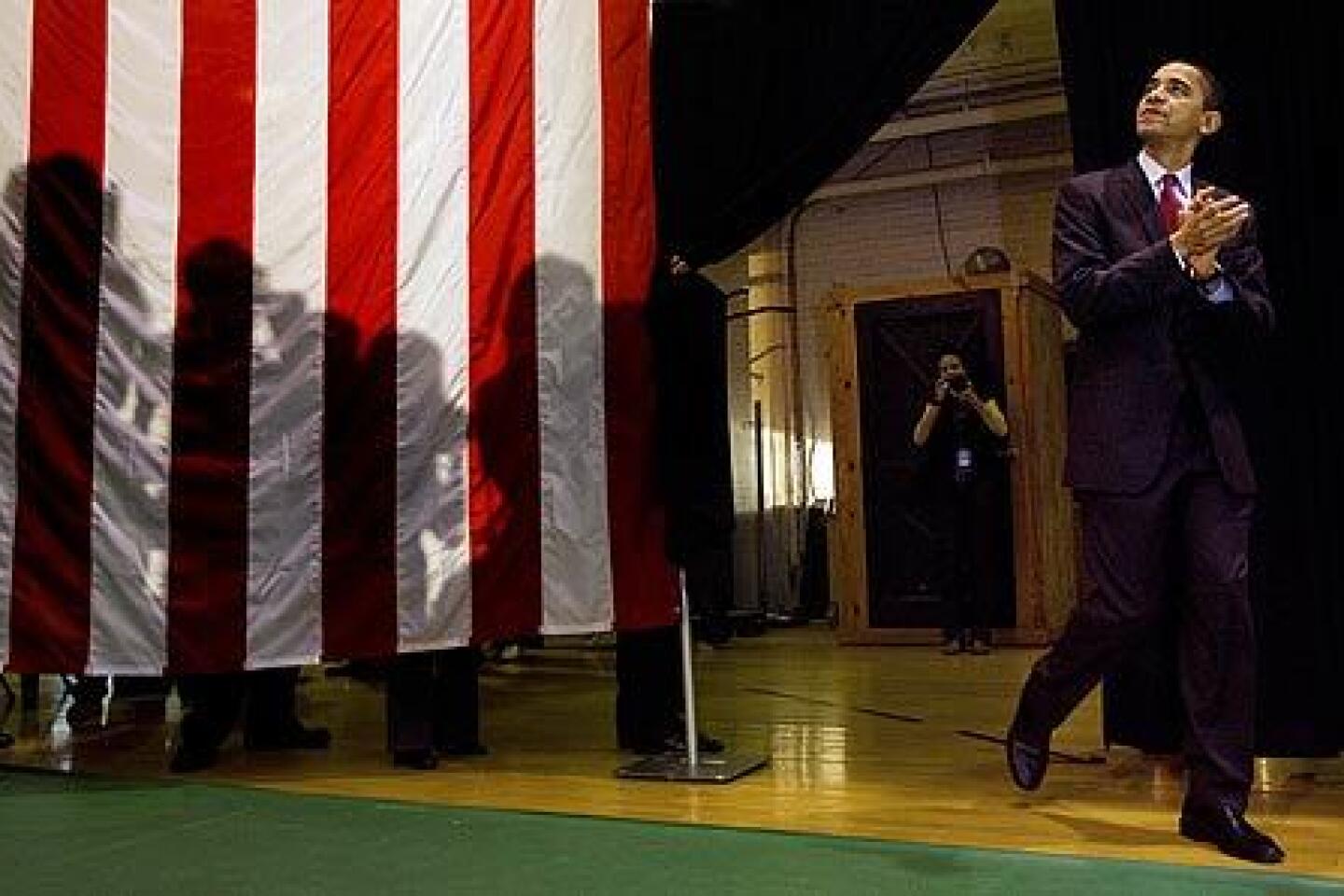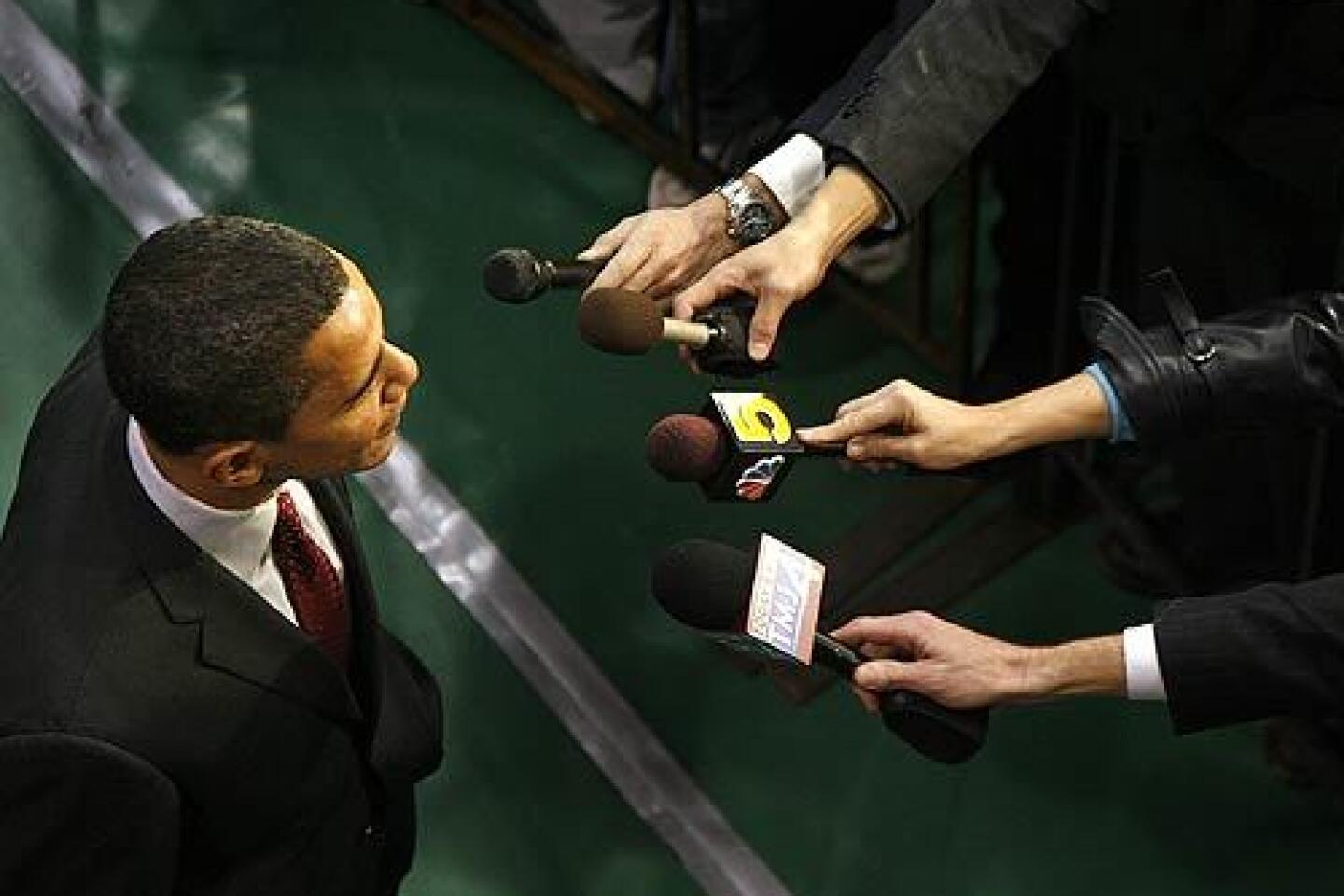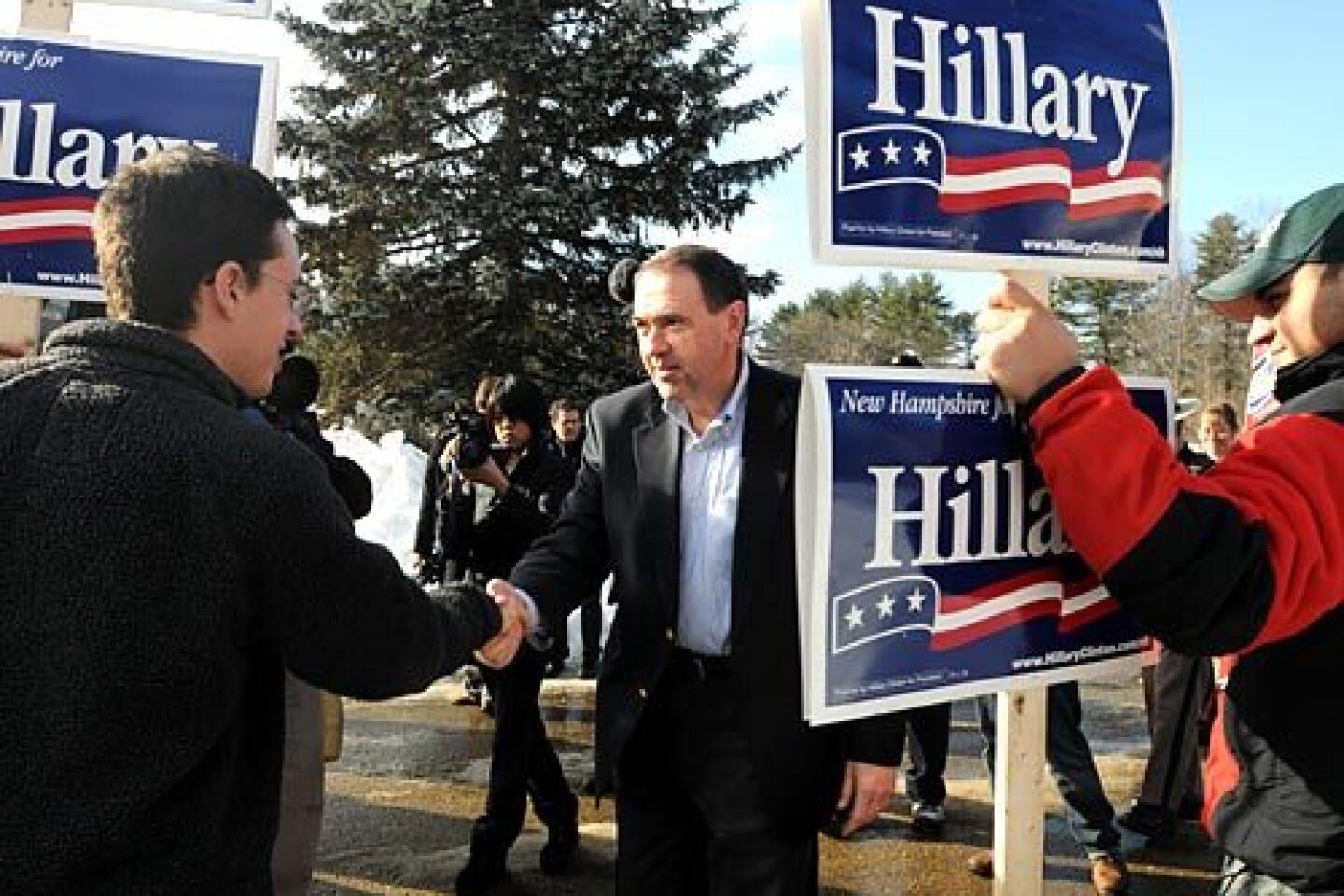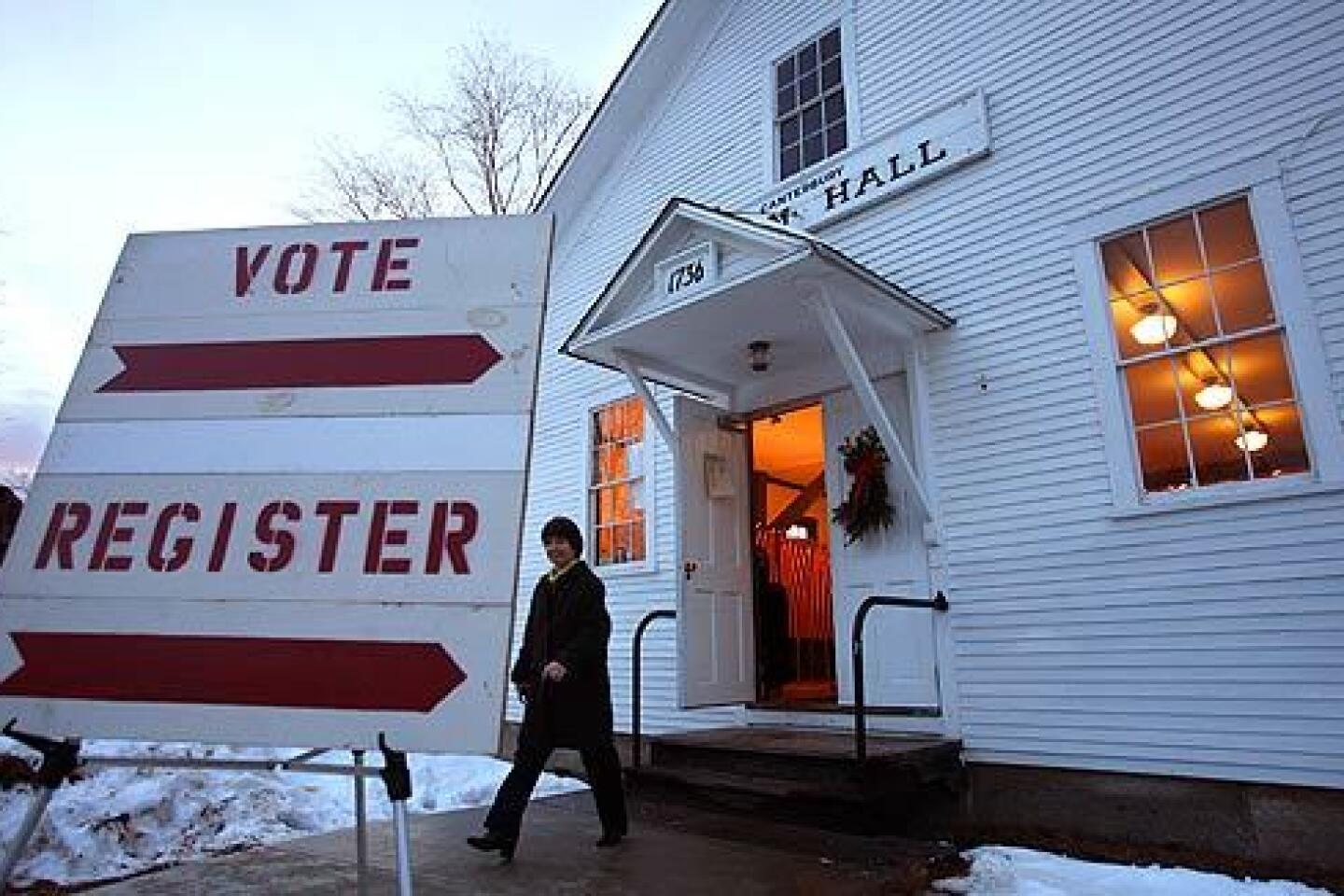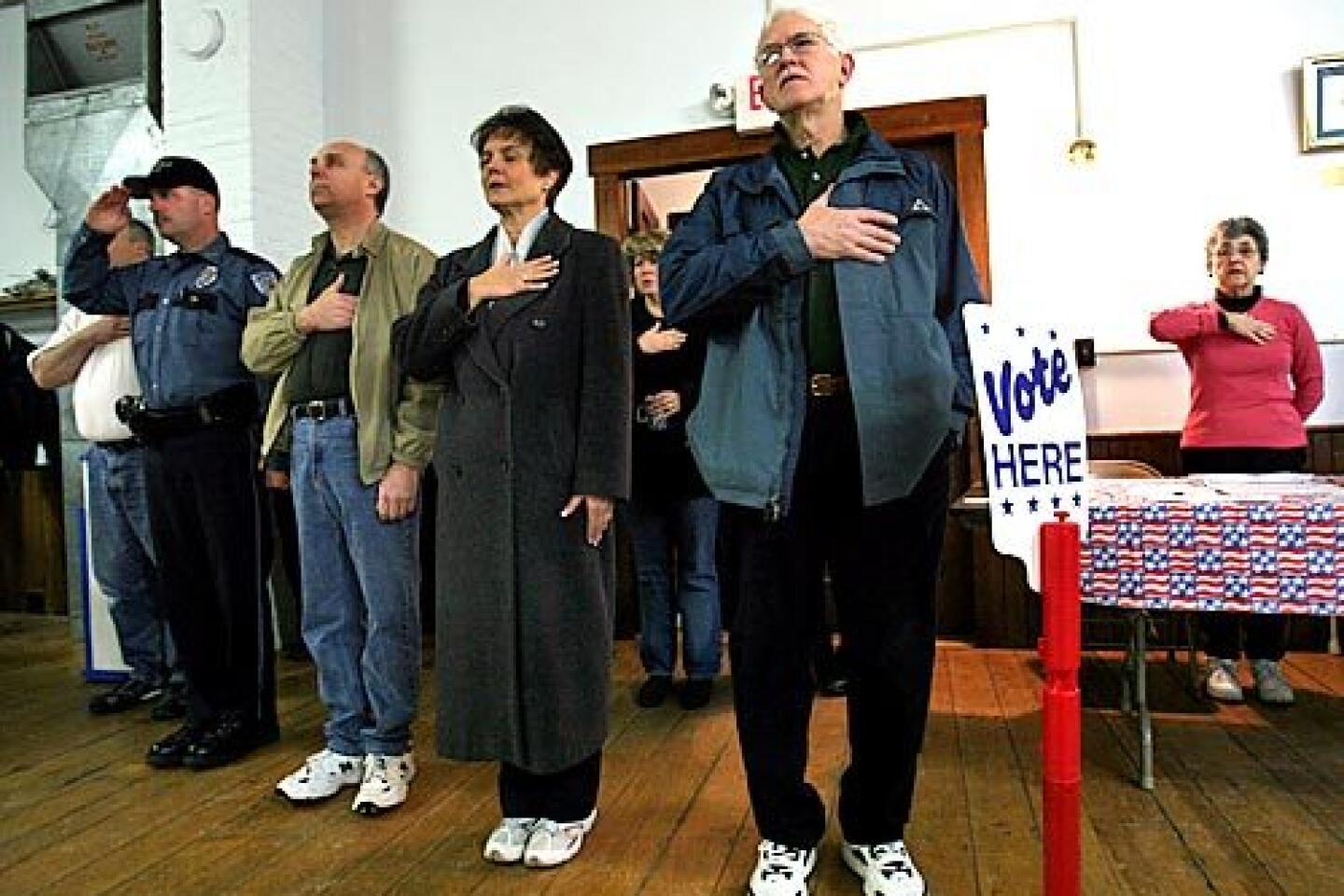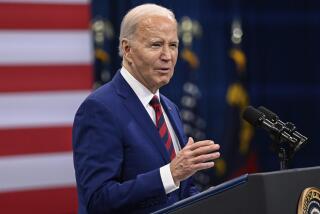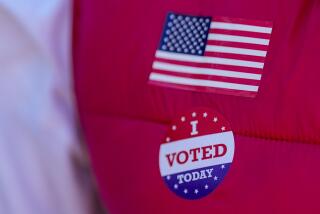Why Feb. 5 looks super to Clinton
The big news Tuesday was not merely that Hillary Rodham Clinton scored an unexpected comeback victory. Emerging from that win was something more durable: a road map that could guide the former first lady to the Democratic presidential nomination.
The margin in the New Hampshire primary was razor-thin. But she clearly beat Barack Obama among core Democratic voters, the very bloc that will grow in influence as the nomination fight continues in the coming weeks.
Strip away the independents who made up about four in 10 participants in Tuesday’s Democratic primary, thanks to the state’s open-balloting rules, and Clinton outpaced Obama among registered Democrats 45% to 34%, according to an exit poll conducted for a media consortium.
Moreover, she beat the Illinois senator among women -- a crucial group for her and one that she lost in last week’s Iowa caucuses -- and among lower-income households and older voters.
“This is an amazing comeback story for her over the course of a relatively few days,” said Mark Mellman, a Democratic strategist who advised Sen. John F. Kerry’s 2004 presidential campaign.
“It would seem to indicate that she has the ability to remobilize her constituents.”
If her advantage among Democrats holds true in the flurry of primaries set for Feb. 5 -- when core Democrats are expected to be more dominant -- Clinton could regain the traction that seemed lost when last week’s defeat in Iowa ended her yearlong reign as the Democratic front-runner.
Only registered Democrats can take part in a number of the Feb. 5 contests that are expected to decide the nomination. Non-Democrats are not welcome, for example, in voting in Connecticut, Arizona and in Clinton’s home state of New York, potential strongholds for Clinton that each control more nomination delegates than the relative handful from Iowa, New Hampshire and other earlier states.
Another major prize that day is California, where unaffiliated voters will be permitted to participate in the Democratic primary. But some strategists believe California’s Latino voters could boost Clinton, who is more popular in that group than Obama.
“That’s when you get more into the base of the party, the bread and butter of this party,” said Donna Brazile, who managed Democrat Al Gore’s 2000 campaign for president.
All told, more than 2,000 delegates will be decided that day, enough to seal the nomination. And by proving her strength, Clinton on Tuesday probably succeeded in calming skittish donors and supporters who had begun to wonder if she could even last until next month’s contests.
The exit polls, conducted by Edison/Mitofsky for a media consortium, surveyed 1,955 Democratic primary voters. The survey found that Clinton, who spoke Monday of shattering the “highest and tallest glass ceiling in our country” by becoming the first female president, won 46% of women’s votes, compared to 34% for Obama.
She also defeated Obama among voters older than 40 and won more than a third of voters in a key part of Obama’s base, those in their mid-20s and 30s.
Tuesday’s results should help to further shape the Democratic race as a two-person contest between Obama and Clinton.
Third-place finisher John Edwards has vowed to campaign through the summer, apparently hoping that one of the front-runners would stumble and leave the former North Carolina senator as the only challenger. Should he drop out or fizzle, it is not clear which of his chief rivals would benefit more, with Clinton likely to draw union members and lower-income people who had been drawn to Edwards.
The next round of voting is not likely to bring much clarity.
Obama, who would be the country’s first black president, is expected to win the Jan. 26 Democratic primary in South Carolina in which African Americans will make up at least half of the electorate.
Clinton is considered competitive in Nevada, which holds its caucuses on Jan. 19. Moreover, although the influential culinary workers union had been expected to endorse Obama today, strategists in both campaigns believed the group may now hold back.
Still, before Clinton can truly declare herself the “Comeback Kid,” as her husband did 16 years ago when he finished a better-than-expected second place in New Hampshire, it was clear Tuesday that Clinton has some repair work to do.
The exit polling suggested that some of her long-held advantages had evaporated in New Hampshire.
No longer was Clinton viewed as the most likely candidate to beat a Republican. In the poll, 44% percent said Obama was more likely to win the November election, compared to 35% who said that of Clinton.
And Obama, as he did in Iowa, proved his ability to attract new voters. About one in five voters Tuesday said it was their first time participating in a primary, and a big plurality of those backed Obama.
Tuesday night unleashed a boisterous celebration among Clinton’s staff here. But the candidate made clear that she intends to transform her campaign, declaring that she “found my own voice” while campaigning in the state.
Still unclear is whether that will be a voice for the kind of “change” that has spawned Obama’s rise, or a voice of “experience” that had been the basis for Clinton’s campaign until her Iowa loss.
Gone from the platform were the old-school players who surrounded Clinton during her concession speech last week, including former Secretary of State Madeleine Albright. Instead, visible for the television cameras and newspaper pictures were young people and her family.
Times researcher Nona Yates contributed to this report.
More to Read
Start your day right
Sign up for Essential California for news, features and recommendations from the L.A. Times and beyond in your inbox six days a week.
You may occasionally receive promotional content from the Los Angeles Times.

